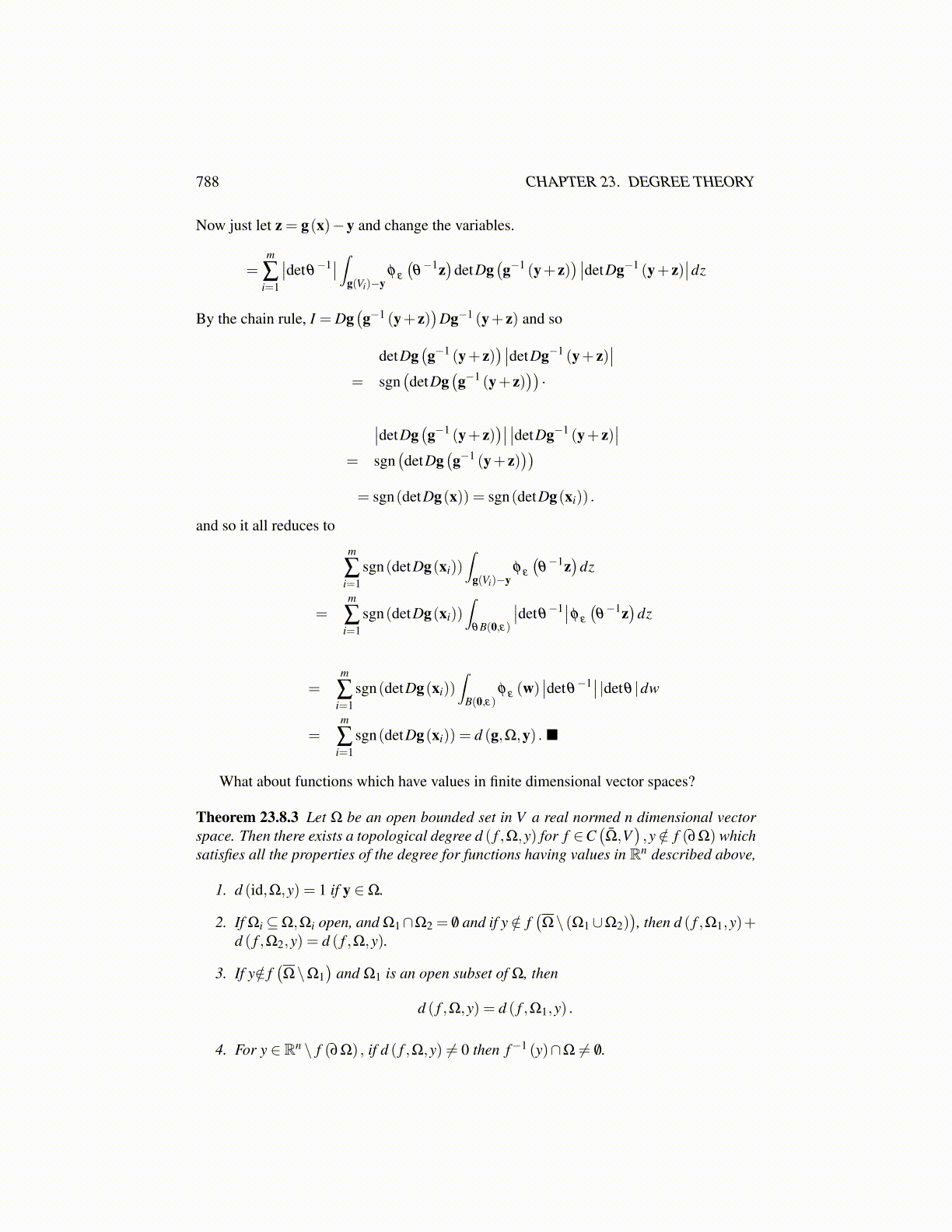
788 CHAPTER 23. DEGREE THEORY
Thus for small ε, the Vi are disjoint open sets in Ω and∫Ω
φ ε
(θ−1g(x)−θ
−1y)
detDg(x)∣∣detθ
−1∣∣dx
=m
∑i=1
∫Vi
φ ε
(θ−1 (g(x)−y)
)detDg(x)
∣∣detθ−1∣∣dx
Now just let z = g(x)−y and change the variables.
=m
∑i=1
∣∣detθ−1∣∣∫
g(Vi)−yφ ε
(θ−1z)
detDg(g−1 (y+ z)
)∣∣detDg−1 (y+ z)∣∣dz
By the chain rule, I = Dg(g−1 (y+ z)
)Dg−1 (y+ z) and so
detDg(g−1 (y+ z)
)∣∣detDg−1 (y+ z)∣∣
= sgn(detDg
(g−1 (y+ z)
))·
∣∣detDg(g−1 (y+ z)
)∣∣ ∣∣detDg−1 (y+ z)∣∣
= sgn(detDg
(g−1 (y+ z)
))= sgn(detDg(x)) = sgn(detDg(xi)) .
and so it all reduces to
m
∑i=1
sgn(detDg(xi))∫
g(Vi)−yφ ε
(θ−1z)
dz
=m
∑i=1
sgn(detDg(xi))∫
θB(0,ε)
∣∣detθ−1∣∣φ ε
(θ−1z)
dz
=m
∑i=1
sgn(detDg(xi))∫
B(0,ε)φ ε (w)
∣∣detθ−1∣∣ |detθ |dw
=m
∑i=1
sgn(detDg(xi)) = d (g,Ω,y) .
What about functions which have values in finite dimensional vector spaces?
Theorem 23.8.3 Let Ω be an open bounded set in V a real normed n dimensional vectorspace. Then there exists a topological degree d ( f ,Ω,y) for f ∈C
(Ω̄,V
),y /∈ f (∂Ω) which
satisfies all the properties of the degree for functions having values in Rn described above,
1. d (id,Ω,y) = 1 if y ∈Ω.
2. If Ωi ⊆Ω,Ωi open, and Ω1∩Ω2 = /0 and if y /∈ f(Ω\ (Ω1∪Ω2)
), then d ( f ,Ω1,y)+
d ( f ,Ω2,y) = d ( f ,Ω,y).